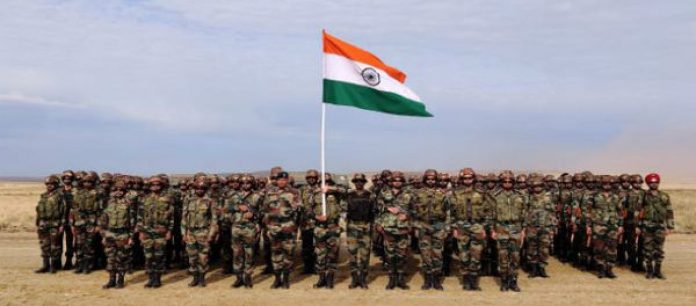- Ever since the Bharatiya Janata Party led National Democratic Alliance came to power, there are certain positive moves initiated to further strengthen the functioning of the Armed Forces keeping in mind the overall security aspects and complementing the dynamically emerging global modern warfare scenario as well. As they say, change is the only constant, the Union Government is further upholding the dictum by making decisive strategies envisaging changes in the largely conventional and hierarchical structure of the military top-brass. As you are aware, the post of Chief of Defence Staff was created for the first time in 2019. The incumbent CDS assumed the office with effect from 01st January 2020.

PC: SNEHESH ALEX PHILIP
- On a similar line, there are few far-reaching changes underway that should be beneficial to the Indian armed services. For quite a long time now, talks were being heard about introducing theatre commands to adapt to emerging challenges. For the uninitiated, there are presently 17 single service commands under the Army, the Air Force, and the Navy. Seven commands each in the Army and the Air Force, and three commands in the Navy, respectively. Reports emerging suggest that the process of merging single commands into four theatre commands is expected to take another two years. Against this backdrop, there are other changes in the making to bring these organizations in sync with the overarching goal of theatre commands.
- As such, a proposal to put greater emphasis on merit without emphasizing seniority at the level of selection for commands is in the works. Understand there is no ambiguity here as the armed forces’ promotions are based on merit since the organizational pyramid narrows sharply bereft of a large pool of eligible commanders to choose from. As is seen recently, chiefs of service are not necessarily selected based on seniority alone. It is not out of place to mention that at least two chiefs in the last five years have superseded their colleagues as the Government of India felt they were the best fit. Rightly so as seniority need not be the primary criterion to select a chief is not under question here.

PC: SNEHESH ALEX PHILIP
- The crux of the matter is the selection at the penultimate stage, that of commanders-in-chief, one rung below the service chiefs. Let us look at the two issues of interest on the matter. Firstly, the prevalent lack of uniformity in selection criteria between the three branches of the armed services. Thus, removing differences in selection criteria between services during the transition to place theatre commands under a single operational commander should be finetuned. Secondly, justified apprehension that the drive towards a greater emphasis on meritocracy may end up undermining the professional ethos of services. Simply put, the politicization of senior ranks should not be the unintended consequence resulting from the envisaged changes.
- Upholding merit designed with a set of criteria that are transparent and geared towards rewarding competence underpins promotions in most admired militaries. The Indian military has a well-established professional track record of staying away as well as not indulging anything remotely related to politics. Trust me, it will continue to remain so. However, the armed forces cannot also ignore a relentless pursuit of merit which should be the driving force for any professionally run organization. Therefore, the changes under consideration should be welcomed and wholeheartedly accepted to position the fighting forces in an exemplary manner.






